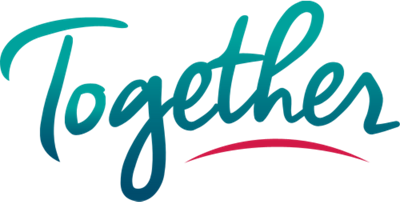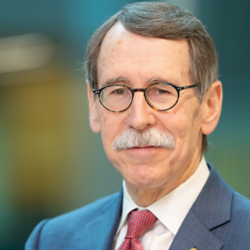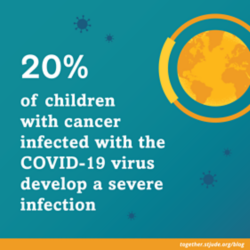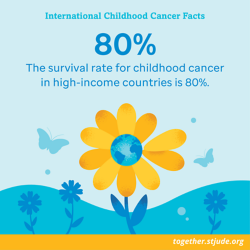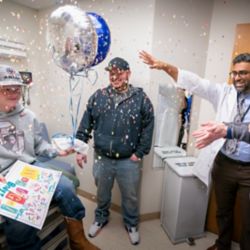Executive VP of St. Jude on Advancing the Treatment of Childhood Cancer and Thoughts on The Future
September is Childhood Cancer Awareness Month. For this occasion, Together interviewed Charles Roberts, MD, PhD, Executive Vice President of St. Jude Children’s Research Hospital. We talked to the pediatric oncologist and scientist about his career advancing the treatment of childhood cancer and his thoughts on the future. He is an internationally recognized leader in cancer epigenetics, the study of how certain changes in genes and proteins are involved in the development of cancer.
Together: How did you discover your interest in pediatric oncology and cancer research?
Dr. Roberts: I come from a family of researchers. My mother was a professor of kinesiology (the study of the mechanics of body movement). My father had his master's degree and later went back to get his PhD. My grandfather had a PhD in biochemistry. I found that I really enjoyed research, asking things that were unknown, and trying to discover things.
In college, what I found exciting in thinking about research was the chance to apply it to something that has the potential to have a real impact." When I went to medical school, I assumed I would be an adult oncologist. During my third year, I rotated onto the pediatric ward. It just changed things for me - seeing how upbeat the kids were, how they had decades of life ahead of them if we could help them beat their illness. I found that really motivating.
It just changed things for me - seeing how upbeat the kids were, how they had decades of life ahead of them if we could help them beat their illness. I found that really motivating.
Together: So today, you're both the director of the Comprehensive Cancer Center and the molecular oncology division at St. Jude Children's Research Hospital. What initially inspired this dedication? And what do you find inspires you now?
Dr. Roberts: As I began to take care of kids who were battling cancer, I found that they provided all of the inspiration that I needed. They can go from having just played a football game to suddenly being faced with a life-threatening illness. It's a problem that if you solve, it's not just helping kids in Madison, Wisconsin, where I grew up, or Boston, where I trained, or Memphis, where I work. It is something that can help kids worldwide.
Together: What have been some of the most significant advancements in childhood cancer research?
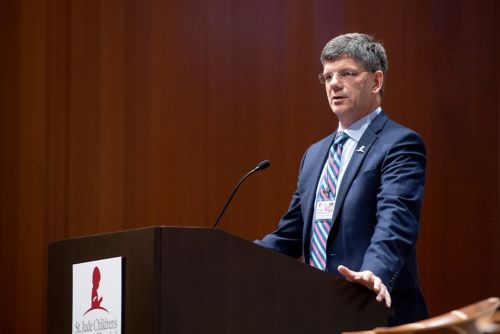
Dr. Roberts: One advance that has been impactful is the Pediatric Cancer Genome Project. It lets us understand what's really driving childhood cancer. We've gotten this understanding that the genomes (the DNA) of childhood cancer are often very simple compared to adult cancers. There are often different genes that are driving it. And this has begun to inform us about what is going wrong in cancer. We can begin to understand the science of it more thoroughly and design treatments to target these genes.
Targeted therapy
This is leading to the dawn of an era of targeted therapy. I say dawn because, it's been about 20 years since imatinib was approved for chronic myeloid leukemia (CML) in adults. But it turns out that many of the genes that are mutated in cancer are not easily targetable. Indeed, many are often called “undruggable,” or very difficult to drug. Across the field we're making advances, but it's not simple work.
There now are some childhood cancers for which we have targeted therapy drugs that can make a big impact. However, they're still a small percentage of childhood cancers overall. The hope is that we can increase that frequency.
Testing for Minimal Residual Disease
As far as things that have already been game changers, I think of minimal residual disease (MRD) testing in acute lymphoblastic leukemia (ALL). ALL is the most common cancer of childhood. Childhood cancer researchers from different institutions – St. Jude, Dana Farber, Children’s Oncology Group, and others -- had worked together to drive up cure rates to over 80%. To increase the cure rate even further we were faced with either giving stronger and more toxic drugs to all kids or to try to identify early on which patients had the cancers that needed more intensive therapy. It turned out MRD testing was able to detect the kids who were at high risk, much higher risk, of having their disease come back and get worse.
It enabled us to hone in on the kids who had the greatest risk. We could increase therapy only for them. It turned out to work, and it drove up cure rates. And now, for ALL, we have cure rates that are around 94% here at St. Jude.
Preventing Life-Threatening Infections
Chemotherapy suppresses the immune system and then patients become at high risk of developing infections. Such infections can be severe or even w fatal. Dr. (Ching-Hon) Pui here at St. Jude pioneered giving preventive antibiotics during treatment for leukemia. The use of preventative antibiotics\has resulted in the number of fatal infections going down. And so that's contributed to the higher cure rates we now have for leukemia.
Using Immunotherapy to Treat Cancer
Another advance in the treatment of ALL is immunotherapy, particularly CAR T-cells. When I was in high school in 1988, I heard a lecturer who was predicting the state of health care in the United States in the year 2000. He predicted that cancer was no longer going to be among the top 10 killers in the United States because of immunotherapy.
It turns out that the immune system is remarkably complex and immunotherapy quite challenging to develop. In 1988, scientists had an even more rudimentary understanding of the rules that really govern it. But as those rules began to get figured out, effective immunotherapy has begun to be developed and has now been shown to be capable of curing some patients who have relapsed or difficult-to-treat leukemia. So that is exciting. And we're at the dawn of investigating whether CAR-T immunotherapy can work for other cancers, to
Another immunotherapy advance has been the use of antibody therapy for neuroblastoma – it has shown significant benefit for children who have advanced neuroblastoma.
Those are some of the things that jump to my mind over my career that are really making a difference. And yet I'm also aware that we still have a long way to go. We are currently unable to cure all kids. And some of our therapies are still quite toxic, require years of therapy, and have long-term side effects. So, while I'm incredibly excited that we're doing better, I continue to be driven by the patients I meet for whom we need to strive to do better.
While I'm incredibly excited that we're doing better, I continue to be driven by the patients I meet for whom we need to strive to do better.
Together: What do you see on the horizon for research as it relates to pediatric cancer as a whole and what hope can we offer families as we consider the future of discovery?
Dr. Roberts: I think of three things here as we look forward.
The first is the ability to systematically search for vulnerabilities in cancer cells. As we pursue cancer research in laboratory models, we now can individually turn off every single gene one at a time in the lab. This enables us to gain insight into how we might better attack cancer cells.
The second would be new ways to target mutations that are "undruggable." There's still a lot of work to be done. But it feels like we're at the dawn of being able to move into targeting things that we've never been able to target before. And that's exciting.
And I think the third is immunotherapy. It's still a complex landscape and there are many challenges. But it feels like there is increasing potential to be able to target more and different cancers.
Those three things come together to give me real excitement looking forward. With childhood cancer, we can look back and know that we can have impact. When St. Jude opened its doors in 1962, the cure rate cure rate for childhood cancer overall was 20%. Now it’s 80%. In 1962, the cure rate for ALL was 4%. Now at St. Jude it’s 94%.
With these three new approaches on the horizon, they make me optimistic that we’ll be able to do even better in the future. We will be able to drive our advances faster and hopefully reduce some of the side effects and toxicities that come about from treating cancer. It is an exciting future.
